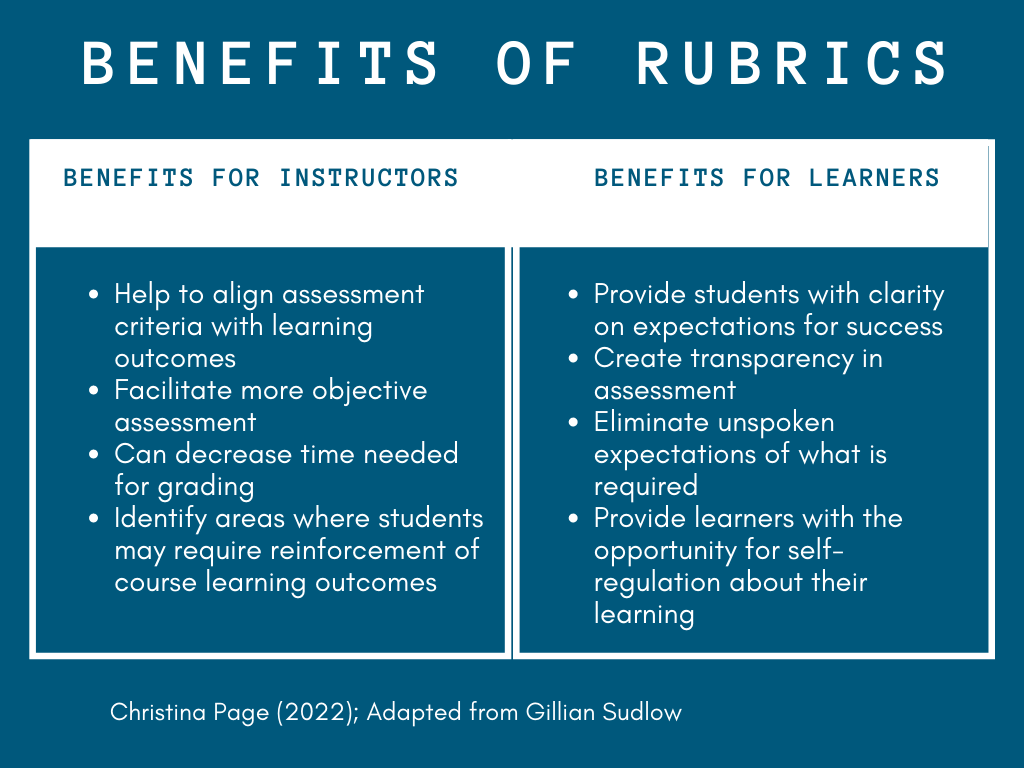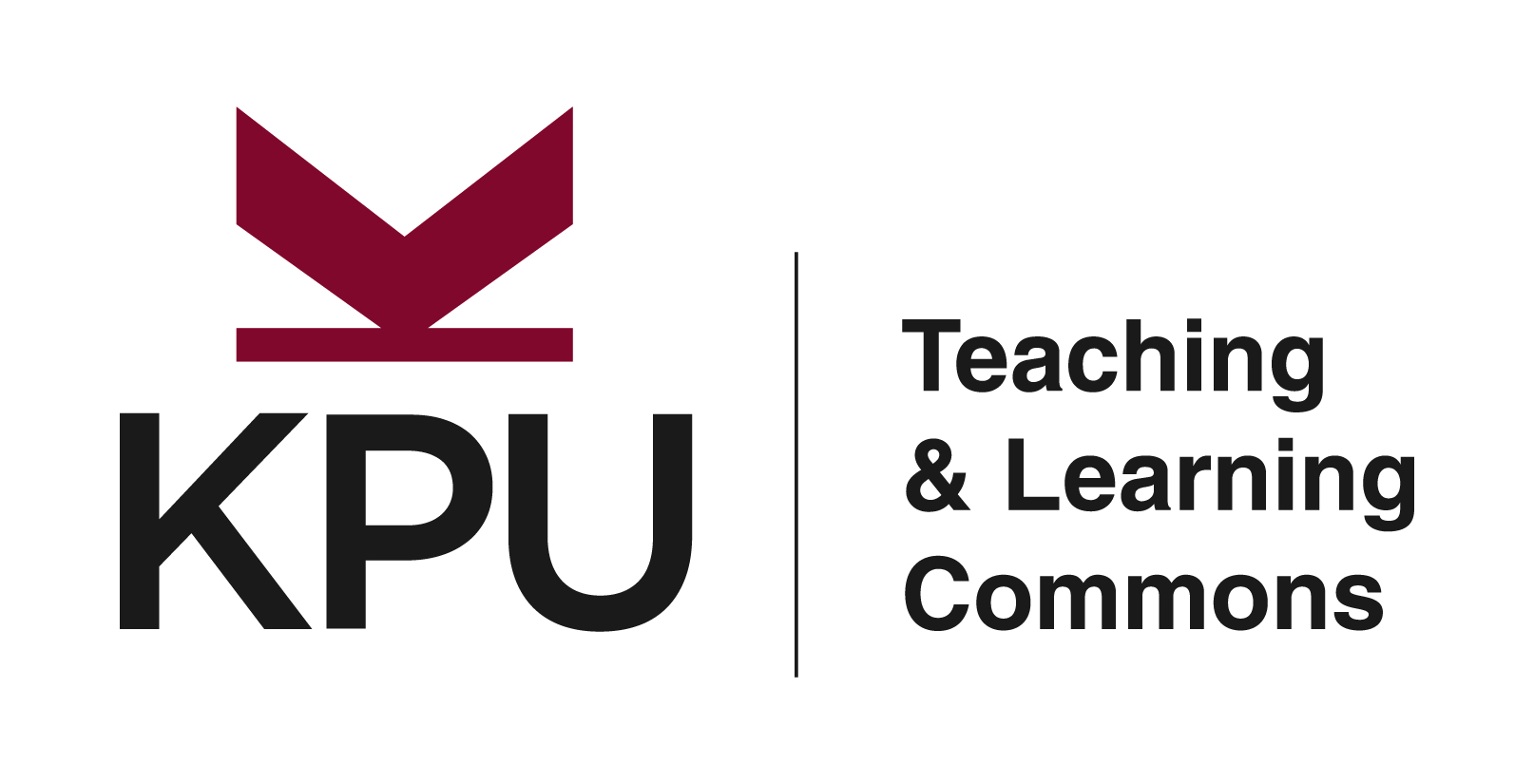Understanding Rubrics
On this page, you will learn about the role of rubrics in formative and summative assessment. Next, you will consider the benefits of rubrics for students and instructors. Then, you will compare and contrast three types of rubrics, and determine when each might be useful for you.
What are the benefits of rubrics for teaching and learning?

Rubrics are assessment tools that clearly state the expectations and standards for an assessment task.
- rubrics clearly define criteria for an assessment task
- criteria is clearly connected to learning outcomes
- may provide a description of the standards that need to be met in order to achieve a certain level of achievement.
Rubrics can be both formative and summative:
Ultimately, rubrics are used for summative assessment, but they are also excellent tools for formative assessment; in fact, a great strategy to improve student learning is to use a rubric iteratively, first to assess learners formatively, then to assess learners summatively.
From: Gillian Sudlow (2021). Faculty Teaching Excellence Learning Assessment Domain. Kwantlen Polytechnic University. Used under a Creative Commons 4.0 SA License.

As mentioned above, rubrics are a beneficial tool for supporting student learning. These benefits are not automatic, as students may require support understanding how they can use the rubric to support their own learning. In the video on the right, you can listen to an example of how a rubric might be explained to students.
